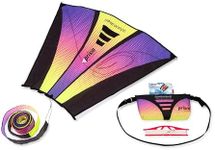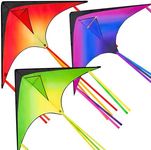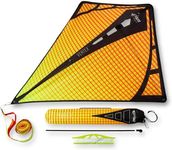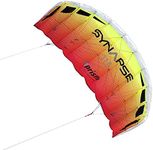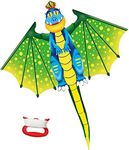Buying Guide for the Best Kites For Kids
Choosing a kite for kids can be a fun and rewarding experience, but it's important to consider a few key factors to ensure the kite is safe, easy to use, and enjoyable for your child. The right kite will depend on your child's age, skill level, and where you plan to fly it. By understanding the main features and specifications, you can make a choice that leads to hours of outdoor fun and learning.Kite TypeKite type refers to the overall shape and design of the kite, such as diamond, delta, box, or parafoil. This is important because different types have different flying characteristics and difficulty levels. Diamond and delta kites are generally the easiest for kids to fly, as they are stable and require less wind. Box and parafoil kites can be more challenging and are better suited for older kids or those with some experience. When choosing, consider your child's age and whether they are beginners or have flown kites before. For most young children, a simple diamond or delta kite is the best starting point.
SizeThe size of a kite is usually measured by its wingspan or length. Size matters because larger kites can be harder to control and require more wind, while smaller kites are easier for kids to handle. Small kites (under 3 feet) are ideal for young children and beginners, as they are lightweight and manageable. Medium kites (3-5 feet) can be suitable for older kids or those with some experience. Large kites (over 5 feet) are best left for teens or adults. Think about your child's age, strength, and where you'll be flying the kite when deciding on the right size.
MaterialKite material refers to what the kite is made from, such as nylon, polyester, or plastic for the sail, and fiberglass or plastic for the frame. This is important because it affects the kite's durability, weight, and ease of use. Lightweight materials like nylon and polyester are strong and easy to fly, while plastic kites are often cheaper but may not last as long. For kids, look for kites made from durable yet lightweight materials, as these will withstand crashes and rough handling better.
Ease of AssemblyEase of assembly describes how simple it is to put the kite together before flying. Some kites come pre-assembled, while others require you to connect rods or attach the string. This matters because complicated assembly can be frustrating for kids and parents alike. Kites that are easy to assemble or come ready to fly are best for young children and beginners. If your child enjoys building things, a kite with simple assembly might add to the fun, but avoid anything too complex for their age.
Wind RangeWind range indicates the range of wind speeds in which the kite will fly well. This is important because some kites need more wind to get off the ground, while others can fly in light breezes. Kites with a wide wind range are more versatile and easier for kids to use in different weather conditions. For most children, choose a kite that flies well in light to moderate winds (around 5-15 mph), as these conditions are common and safe for beginners.
Safety FeaturesSafety features include things like soft edges, breakaway strings, and non-toxic materials. These are important to prevent injuries and ensure the kite is safe for kids to use. Look for kites with rounded edges, sturdy construction, and strings that are not too thin or sharp. For younger children, avoid kites with small detachable parts that could be a choking hazard. Always supervise kids while flying kites, especially near roads or power lines.

